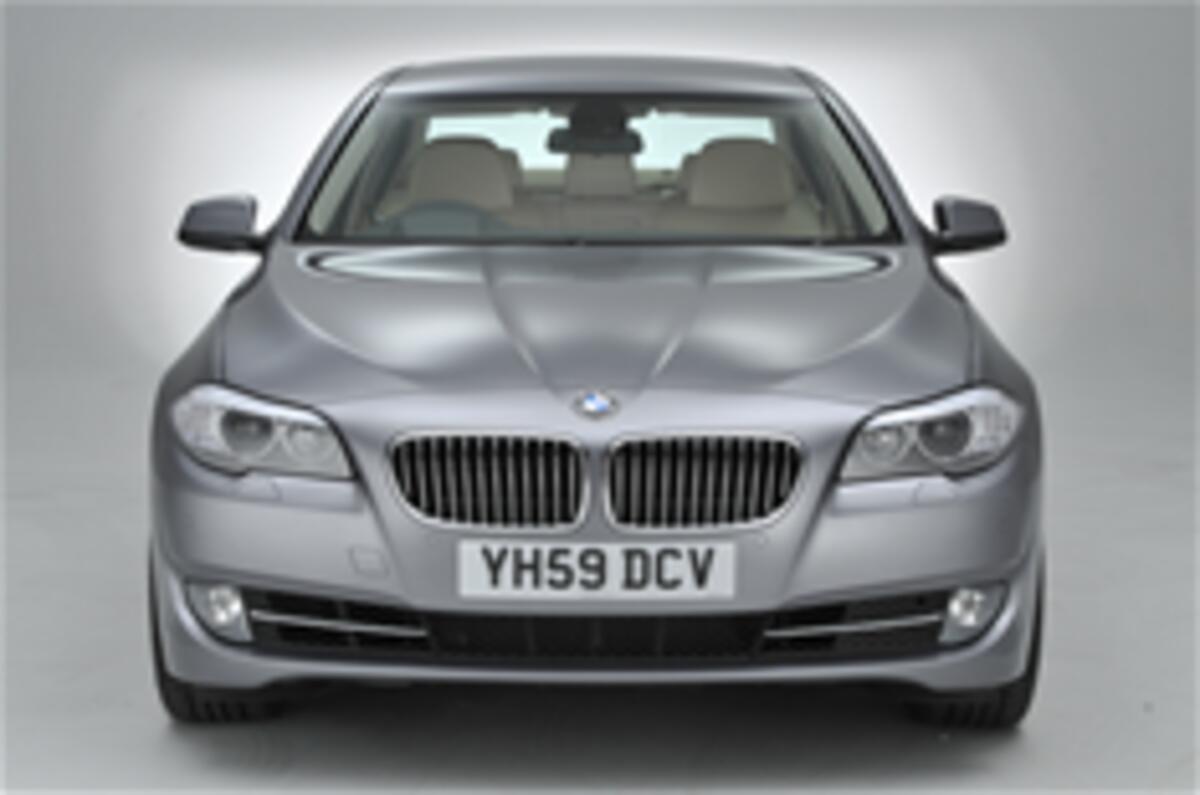This is the new BMW 5-series four-door saloon, the sixth generation of its second biggest seller, which first appeared in 1972.
Despite its familiar format, the new BMW 5-series, which goes on sale after the Geneva motor show next March, breaks new ground by importing much of the equipment and technology of the recently launched 7-series, reinstating a driver-oriented fascia design which BMW dropped for one generation, and adopting a sophisticated new double-wishbone front suspension set-up.
New BMW 5-series picture gallery - more pictures
New BMW 5-series picture gallery - original picture selection
VIDEO - New BMW 5-series on video
BMW 5-series's design explained
There are seven engine options at launch, and BMW is stressing the importance of the UK market (and that fact that it has noticed the good reception of Mercedes’ new E-class) by issuing UK prices more than four months early.
Design and dimensionsThe biggest change to the proportions of the new 5-series is its adoption of an 80mm longer wheelbase, at 2970mm.
This improves rear cabin room allows a long bonnet, a low roofline and 50/50 weight distribution, and gives the car balanced proportions with relatively short overhangs front and rear. The kidneys of the grille are vertical rather than raked, designers say, to portray the car’s sporting character.
The styling relationship with the outgoing 5-series is obvious, but the car is less controversial than its predecessor, with a sleeker appearance apparently designed to enhance the visual differences between the 5-series and the 3-series, which has adopted a more grown-up look.
The saloon’s wheelbase is still 100mm shorter than the 3070mm shared by the 7-series and the 5 GT.
ChassisBMW promises “a more composed ride” with no reduction in dynamic capability now that the 5-series has adopted a longer wheelbase, and the 7-series’ sophisticated double-wishbone, coil-sprung front suspension system to replace the traditional MacPherson struts. The rear suspension is an independent multi-link system.
All new 5s get electric power steering, with Servotronic (speed-dependent) assistance, which saves weight and drag on the engine. It’s a big step for BMW, which has continued to prefer the ‘feel’ of electro-hydraulic systems as rivals have adopted electric set-ups.





Join the debate
Add your comment
Re: BMW 5-series - more pictures
BMW employs people at Swindon pressing body panels and in Birmingham at Hams Hall they make all the BMW and Mini 4 cylinder petrol engines which are exported around the globe. They also have Rolls Royce at Goodwood. They are a good employer making a good product. Calm down dear CapsLock.
Re: BMW 5-series - more pictures
Neither has BMW “cut and run “from Sauber. BMW was initially in partner ship with Sauber before it bought the F1 team outright and Peter Sauber continued as a technical consultant. After BMW failed in its objective to win the F1 within 3 years it has decided to sell it beck to Sauber. No “cutting and running”.Re: BMW 5-series - more pictures
There is one main problem now, the car is nowhere near as uniques as the model that's out at the moment.
I'm afraid to say it looks......a bit boring